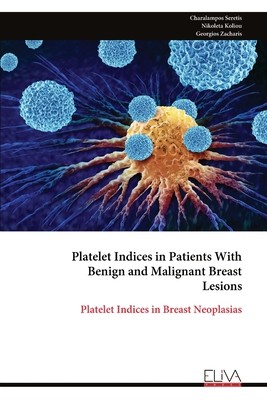
- We will send in 10–14 business days.
- Author: Charalampos Seretis
- Publisher: Eliva Press
- ISBN-10: 9999315364
- ISBN-13: 9789999315364
- Format: 15.2 x 22.9 x 0.4 cm, minkšti viršeliai
- Language: English
- SAVE -10% with code: EXTRA
Platelet Indices in Patients With Benign and Malignant Breast Lesions (e-book) (used book) | bookbook.eu
Reviews
Description
The local growth and metastatic spread of breast cancer cells is strongly associated to the co-existence of changes in haemostasis. Platelets play a crucial role in the framework of this nterplay, predominantly through their activation and the trend for reactive thrombocytosis, which both lead to the formation of new blood vessels and increase the local and systematic inflammatory profile, favoring the natural progression of breast cancer. Therefore, it would be very useful to evaluate whether the common laboratory platelet indices could be considered as biomarkers of the biological behavior of a type of cancer, which stands as one of the leading causes of death for the female population. Within the framework of our present study, we evaluated the common laboratory indices of platelets - total count (TPC), mean volume (MPV), platelet distribution width (PDW), large platelet cell ratio (LPCR) - both alone and in combination with the total lymphocyte count, in the form of the conventional prognostic biomarker of survival - platelet to lymphocyte ratio (PLR) - as well as in the context of its modified version we propose - large platelet to lymphocyte ratio (LPLR). The laboratory data were evaluated for their degree of correlation with the nature of the underlying neoplasia (benign or malignant neoplasia) and, in the case of malignant lesions they were correlated with the basic pathological-anatomical characteristics -tumor size, spread to lymphatic nodes, grade, over-expression of hormonal receptors/HER2 protein- and the Nottingham Prognostic Index (NPI), score used to estimate the 5-year survival of breast cancer patients.
EXTRA 10 % discount with code: EXTRA
The promotion ends in 21d.04:53:20
The discount code is valid when purchasing from 10 €. Discounts do not stack.
- Author: Charalampos Seretis
- Publisher: Eliva Press
- ISBN-10: 9999315364
- ISBN-13: 9789999315364
- Format: 15.2 x 22.9 x 0.4 cm, minkšti viršeliai
- Language: English English
The local growth and metastatic spread of breast cancer cells is strongly associated to the co-existence of changes in haemostasis. Platelets play a crucial role in the framework of this nterplay, predominantly through their activation and the trend for reactive thrombocytosis, which both lead to the formation of new blood vessels and increase the local and systematic inflammatory profile, favoring the natural progression of breast cancer. Therefore, it would be very useful to evaluate whether the common laboratory platelet indices could be considered as biomarkers of the biological behavior of a type of cancer, which stands as one of the leading causes of death for the female population. Within the framework of our present study, we evaluated the common laboratory indices of platelets - total count (TPC), mean volume (MPV), platelet distribution width (PDW), large platelet cell ratio (LPCR) - both alone and in combination with the total lymphocyte count, in the form of the conventional prognostic biomarker of survival - platelet to lymphocyte ratio (PLR) - as well as in the context of its modified version we propose - large platelet to lymphocyte ratio (LPLR). The laboratory data were evaluated for their degree of correlation with the nature of the underlying neoplasia (benign or malignant neoplasia) and, in the case of malignant lesions they were correlated with the basic pathological-anatomical characteristics -tumor size, spread to lymphatic nodes, grade, over-expression of hormonal receptors/HER2 protein- and the Nottingham Prognostic Index (NPI), score used to estimate the 5-year survival of breast cancer patients.


Reviews